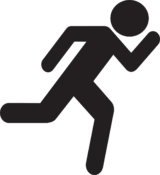What Happens During a Doctor’s Visit for a Head Injury? 🤕
Head injuries can be both frightening and confusing. Whether it’s a bump, a fall, or something more serious, knowing what to expect during a doctor’s visit can ease some of the anxiety. Let’s walk through the process step-by-step to help you feel prepared and informed. 🏥
Table of Contents
1. Initial Assessment: The First 10 Minutes
2. Diagnostic Tests: Getting to the Root of the Problem
3. Treatment Plan: Steps to Recovery
4. Follow-up Care: Long-term Health
5. FAQ: Common Concerns About Head Injury Visits
Initial Assessment: The First 10 Minutes ⏱️
As soon as you step into the doctor’s office, the initial assessment begins. This is a crucial moment where the doctor or nurse will gather essential information about the injury. Here’s what typically happens:
– **Questions and Answers:** Expect to answer questions about the incident. How did the injury occur? When did it happen? Are you experiencing symptoms like nausea, dizziness, or confusion? It’s vital to provide as much detail as possible to help the doctor make an accurate assessment. 🗣️
– **Physical Examination:** The doctor will perform a basic physical exam, checking your eyes, reflexes, and balance. This helps determine the severity of the injury and whether immediate intervention is needed. 👀
Diagnostic Tests: Getting to the Root of the Problem 🔍
If the initial assessment suggests a more serious injury, diagnostic tests may be necessary:
– **CT Scan or MRI:** These imaging tests provide a detailed look at your brain. They help identify bruises, bleeding, or swelling that might not be visible from the outside. 🧠
– **Neurological Exam:** This involves more detailed tests to evaluate brain function, including memory, concentration, and motor skills. 📝
Treatment Plan: Steps to Recovery 🛠️
Once the cause and severity of the injury are identified, the doctor will create a treatment plan tailored to your needs:
– **Rest and Observation:** For mild injuries, rest is often the best medicine. The doctor might recommend avoiding screens, strenuous activities, and anything that could strain your brain. 😴
– **Medication:** In some cases, medication may be prescribed to manage symptoms like pain or swelling. 💊
– **Therapy:** For more severe injuries, physical therapy or cognitive rehabilitation might be necessary to aid recovery. 🧩
Follow-up Care: Long-term Health ❤️
Your journey to recovery doesn’t end at the doctor’s office. Follow-up care is essential to ensure you’re healing properly:
– **Scheduled Appointments:** Regular check-ups will help monitor your progress and adjust treatment if necessary. 📅
– **Lifestyle Adjustments:** You might need to make changes to your daily routine to support your recovery, such as modifying your work schedule or adopting a healthier lifestyle. 🌿
FAQ: Common Concerns About Head Injury Visits ❓
1. How long does a doctor’s visit for a head injury typically last?
It varies, but most visits last between 30 minutes to an hour, depending on the severity of the injury and the tests required.
2. Will I need someone to accompany me to the doctor’s office?
It’s often recommended to have someone with you, especially if you’re experiencing symptoms like dizziness or confusion.
3. Can head injuries heal on their own?
Minor head injuries often heal with rest and time, but it’s crucial to follow a doctor’s advice to prevent complications.
4. Are there any signs that indicate I should seek immediate medical attention?
Yes, if you experience symptoms like severe headache, repeated vomiting, seizures, or any loss of consciousness, seek emergency care immediately.
Understanding what happens during a doctor’s visit for a head injury can help you advocate for your health and recovery. Remember, your well-being is the top priority! 😊

